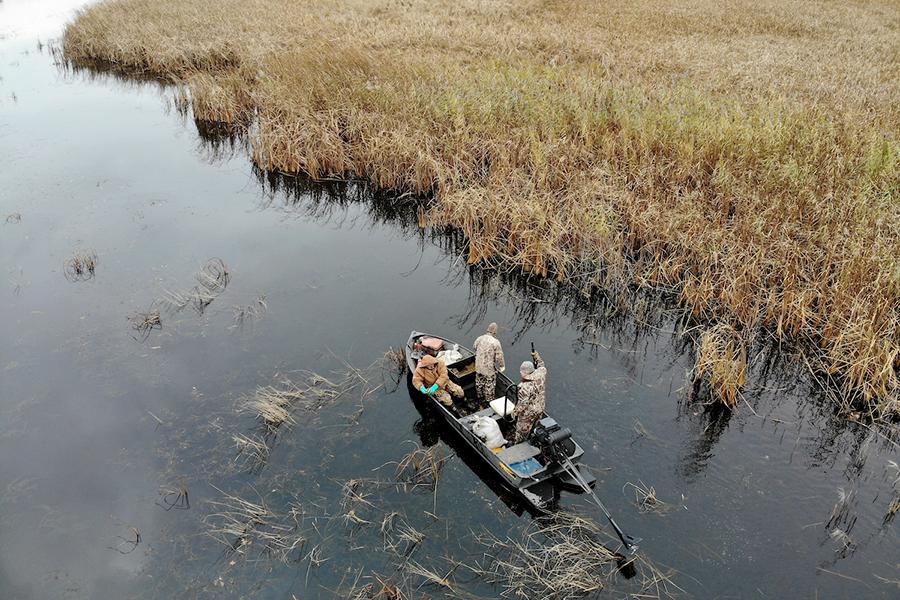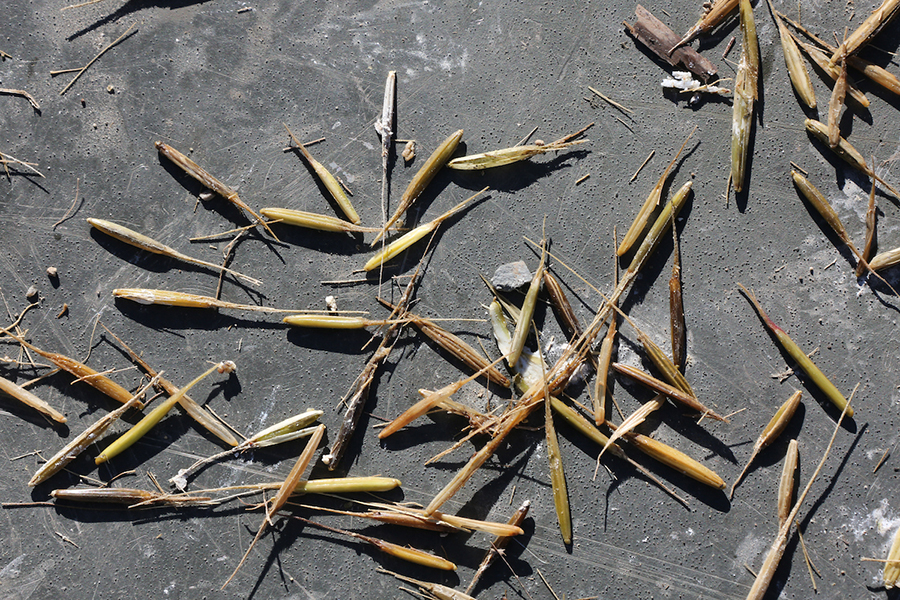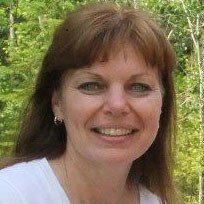Wild Rice Planting
Growing Classroom Experience
Help students connect to their environment.
Wild Rice in the Classroom is a project that aims to grow more Manoomin (in Ojibwe) or wild rice, which enhances aquatic plant diversity and provides food and habitat for fish and wildlife. Local teachers and K-12 students help conservation efforts by first growing wild rice in the classroom to enhance place-based and experiential learning.

How it Works
This project is a cooperative effort between UW-Green Bay’s Lower Fox River Watershed Monitoring Program, a grant received from the US Fish and Wildlife Service Coastal Program and additional support from Ducks Unlimited..
Cultivate in the Classroom
Teachers are given all the materials — lights, buckets, growing medium and wild rice seed — to successfully grow the rice in your classroom. You'll also learn about the historical, cultural and ecological importance of Manoomin.
Transplant to Wetland Sites
Following the classroom experience, resulting Manoomin “plugs” are transplanted to wetland sites. Take a field trip to visit your plants! That way, students can see their work in action and build a relationship with the water resources and wetlands in their communities.
Collaborate with First Nations
Manoomin is an important aspect to Indigenous cultures across the Great Lakes because it's not only a source of sustenance and habitat, but also a way to strengthen communal bonds. We're working with Indigenous partners to to elevate cultural knowledge and experiences as part of the project.

Operation
Plant Rescue
Like wild rice itself, the program had to adapt when it began in 2020.
"Wild Rice in the Classroom" started as a pilot project in March 2020 with 6th graders at Parkview Middle School in Ashwaubenon. Students excelled at starting their plants, but when schools closed due to the COVID-19 pandemic, the plants needed rescuing. They were nurtured in the UW-Green Bay greenhouse, with video updates sent to students. In May 2020, the mature wild rice plugs were planted at L.H. Barkhausen Waterfowl Preserve in Suamico, contributing to wetland restoration and serving as an educational opportunity for the community. Now, the project has expanded to ___ classrooms across ___ schools. (updated 2024 numbers?)

Ask an Expert
Ask Lynn Terrien, Outreach and Education Coordinator for the program. If you have questions, she can help!